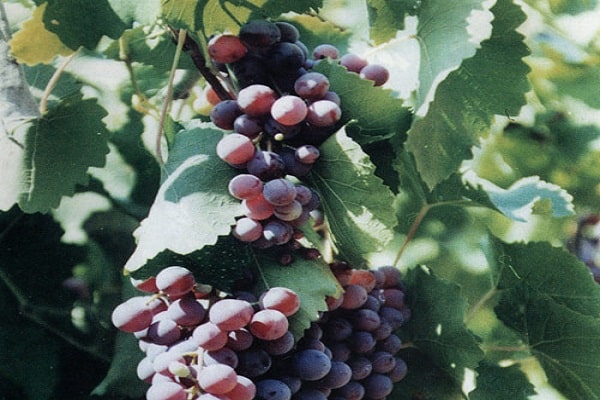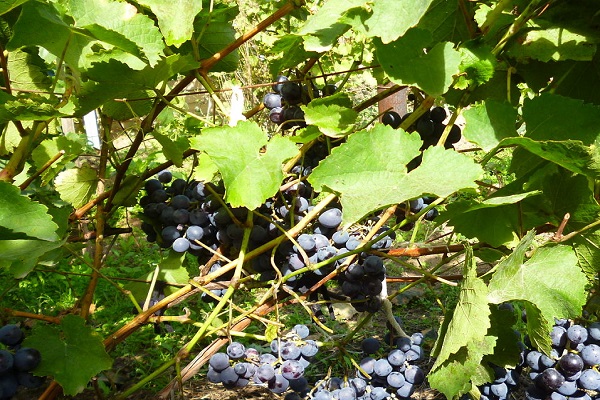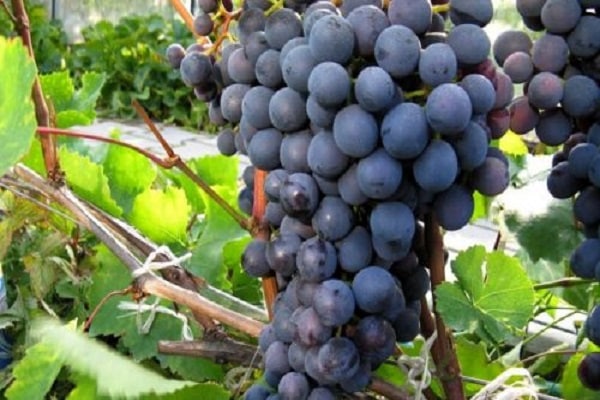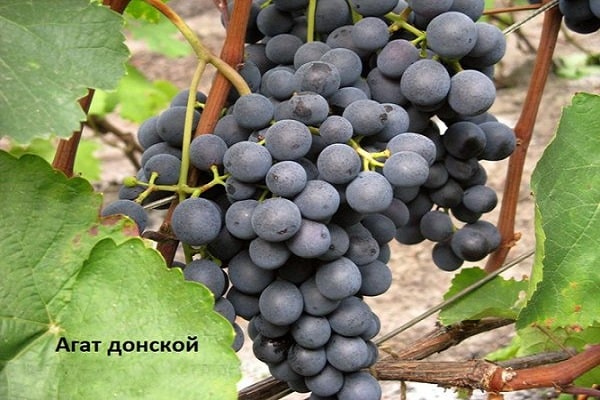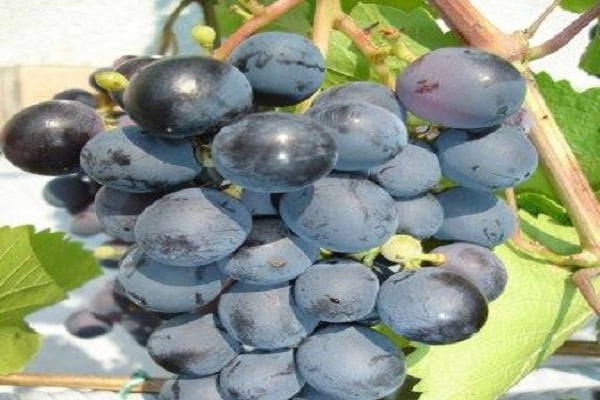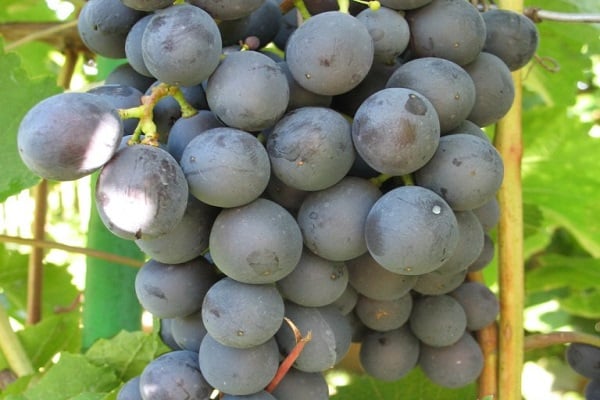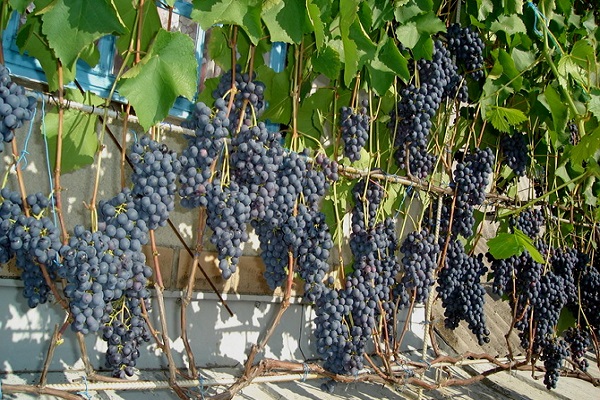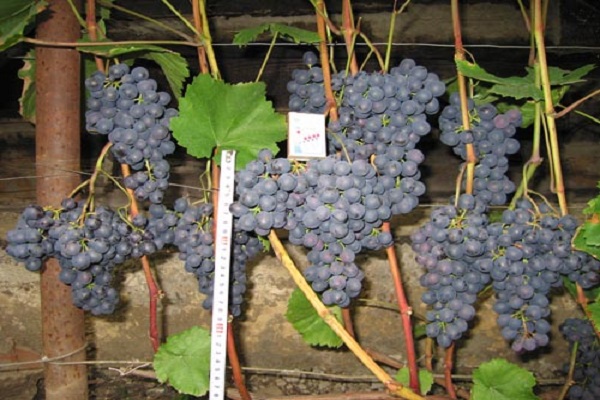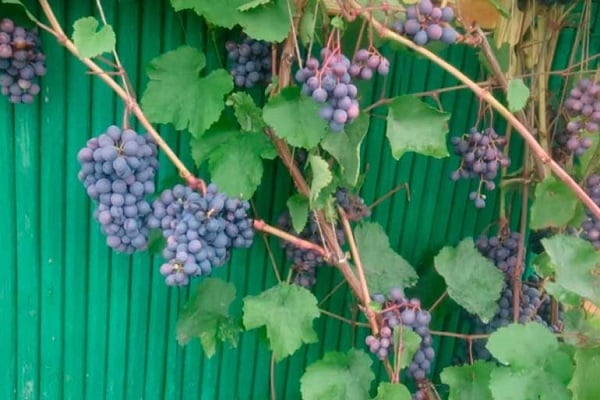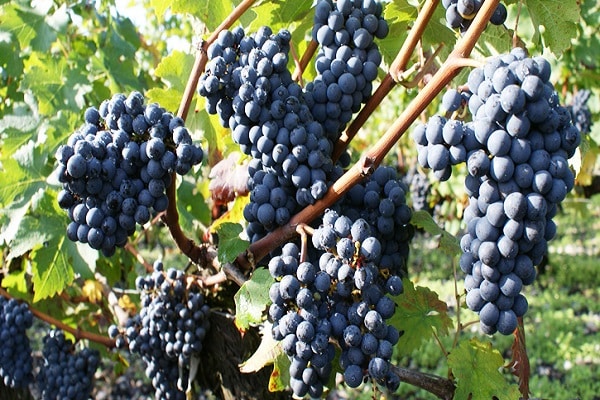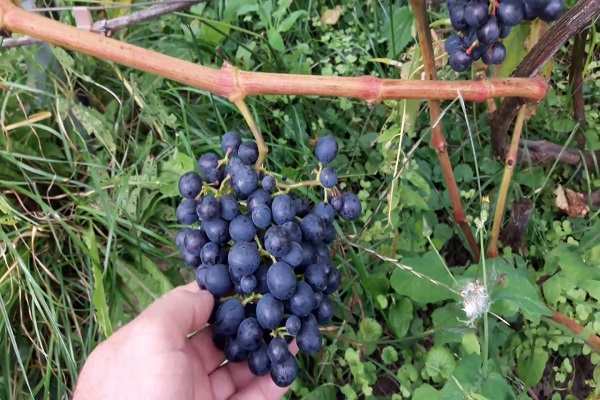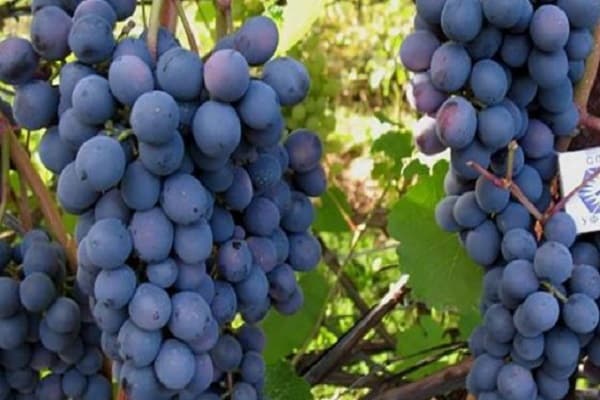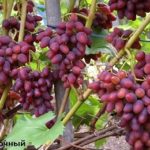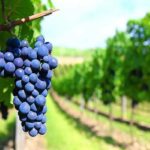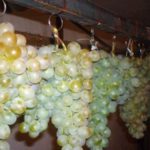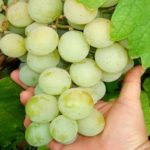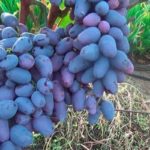One of the main features of the Agat Donskoy grape variety is that the crop produces a bountiful harvest. The crop is able to grow in various regions of Russia due to the fact that it tolerates frost well and is characterized by increased resistance to common pests. The fruits of the plant are suitable both for consumption and for making wine.
- History of breeding Agat Donskoy
- Advantages and disadvantages of the variety
- Grape growing area
- Characteristics and botanical description
- Bush and shoots
- Pollinability
- Harvest quantity
- Size and taste of fruits
- Planting seedlings
- Lighting
- Required soil composition
- Depth and diameter of planting hole
- Feeding after planting
- Features of cultivation and care
- Frequency and rate of watering
- Fertilizer application
- Pinching
- Shaping and trimming
- Preparing for winter
- When can we expect the first harvest?
- Fruit ripening time
- Collection and storage of berries
- Ways to increase productivity
- Diseases and pests - their description and methods of control
History of breeding Agat Donskoy
The variety appeared thanks to the crossing of Zarya Severa, Russian early and Dolores. These cultures were brought to the Knight. Novocherkassk breeders were engaged in breeding a new hybrid.
Advantages and disadvantages of the variety
Donskoy agates have the following advantages:
- good survival rate;
- low seating requirements;
- early and stable harvest;
- increased resistance to disease and transportation.
This variety has good frost resistance. Without shelter, grapes can tolerate temperatures down to -26 degrees.
Among the disadvantages of Agat Donskoy is that the crop is susceptible to several pests. For normal plant ripening, sudden temperature changes must be avoided.
Grape growing area
The southern regions of the country are considered the optimal place for planting the crop. But if you follow the rules of care and cultivation, the plant produces crops in temperate latitudes, as well as in the Urals.
Characteristics and botanical description
This variety gives a stable harvest. The rate of ripening of berries directly depends on the region of growth.
Bush and shoots
The plant is characterized by rapid growth. Up to 80% of shoots capable of producing a harvest are formed on the vine. Because of this, it is recommended to regularly trim the eyes, thereby reducing the level of stress on the plant.
The bush has a branched structure. The roots of the vine form a large system and penetrate deep into the ground.Due to its high frost resistance, no more than 20% of new shoots die when exposed to low temperatures.
Pollinability
The plant has flowers of both sexes. Therefore, Agat Donskoy does not require planting other pollinating varieties on the site.
Harvest quantity
Donskoy agate produces a harvest by mid-August or September (when grown in temperate latitudes). The average weight of one bunch is 400-600 grams. In this case, the appearance of brushes weighing up to 1 kilogram is possible. On average, one mature vine produces up to 50 kilograms of harvest.
Size and taste of fruits
The clusters of Agat Donskoy contain round berries of a dark blue hue. The surface of the fruit is covered with pruin (waxy coating). The total weight of each berry varies between 4-6 grams.
The berries are characterized by a dense shell and crispy pulp. The fruits have a pleasant but simple flavor. The sugar concentration in berries does not exceed 15%. The fruits can hang on the bush for several weeks without losing their original qualities.
Planting seedlings
Planting Agata Donskoy grapes is carried out according to a similar scheme that is used when growing other crops. It is optimal if the seedlings are buried in spring or autumn. The grapes quickly take root and in the future produce branches for propagation. The distance between holes must exceed 1.5 meters. When planting grapes, it is recommended to install trellises along which the vine will curl.
Lighting
Grapes do not grow in shaded areas. To plant the crop, it is recommended to dig holes in the southern or southwestern parts of the site. If there are large trees in the growing area, it is recommended to plant the vine at a distance of at least 5 meters from other plants.
When growing crops on a large scale, the rows of grapes should be located from north to south. This ensures uniform illumination of all bushes.
Required soil composition
This variety does not impose increased requirements on the composition of the soil. Well-drained soil is considered optimal for growing the plant. During planting, it is recommended to add humus to the hole.
The plant should not be grown in an area where groundwater lies at a depth of less than 1.5 meters. Recommended soil acidity is 6.5-7 pH.
Depth and diameter of planting hole
The depth of the hole in chernozem should be 50 centimeters, in other soils - 70 centimeters. The width of the hole is similar to the given indicators.
Feeding after planting
Peat mixed with 20 grams of nitrogen and 40 grams of potassium and phosphorus is used to feed seedlings. After planting, the soil next to the vine must be mulched.
Features of cultivation and care
The grapes of this variety are not demanding both in terms of planting and subsequent care. However, due to the active growth of the vine, it is recommended to follow certain rules.
Frequency and rate of watering
It is recommended to water the grapes three times:
- before flowering;
- after flowering;
- during the period of fruit formation.
At least 7 buckets of water should be poured under each bush.
Fertilizer application
In spring you should apply a mixture of mineral fertilizers:
- 20 grams of superphosphate;
- 10 grams of ammonium nitrate;
- 5 grams of potassium sulfate;
- 10 liters of water.
A week before flowering, the vine is fed with organic matter (2 kilograms of humus per 10 liters of water). 14 days before the formation of the ovary, 10 grams of potassium magnesia with 20 grams of ammonium nitrate mixed with 10 liters of water are added to the soil.For 2-3 weeks before and after harvesting, the plant is fed with the same mineral fertilizers.
Pinching
In order for the grapes to produce a good and constant harvest, it is recommended to remove excess shoots 3-5 days before flowering.
Shaping and trimming
To form the correct crown, it is recommended to regularly pinch the bush. There should be no more than 5-8 buds on the shoot, and up to 35-45 on the vine.
Preparing for winter
Before frost sets in, the vines are removed from the trellises and laid on the ground. The plant is sprayed with compounds that increase the resistance of the grapes to the external environment. Then the vine is covered with straw or special material.
When can we expect the first harvest?
The grapes bear their first fruits relatively early. However, a good harvest appears several years after planting. The duration of this period is influenced by the region of growth and the approach to growing the crop.
Fruit ripening time
On average, the period between flowering and the appearance of ripe fruits is 115-120 days. In the southern regions of the country, grapes are harvested by mid-August. When grown in the Urals or in temperate latitudes, ripe berries can be collected in early autumn.
Collection and storage of berries
Berries are stored in the refrigerator or dark room with moderate temperature and humidity.
Ways to increase productivity
In order for grapes to constantly produce a good harvest, it is necessary:
- leave no more than two brushes on the shoot;
- trim shoots annually;
- tie up the plant at least 2-3 times during the growing season;
- provide moderate watering.
We also must not forget about the timely application of mineral and organic fertilizers.
Diseases and pests - their description and methods of control
Agat Donskoy grapes are susceptible to the following diseases:
- Mildew. It is characterized by the formation of yellow spots and gray plaque on the leaves, which leads to the falling of the latter. To combat mildew, use an 8% Bordeaux mixture.
- Powdery mildew. Causes the appearance of white bloom and dark spots on the leaves, and also provokes cracking of the berries. Treatment is carried out using colloidal sulfur.
- Gray rot. Affects all grapes. Fundazol and Euparen help against gray rot.
- Oidium. Develops on leaves and inflorescences. Topaz, ground sulfur and Skor help to get rid of oidium.
To avoid infection, it is recommended to periodically spray the vine with the above products.

